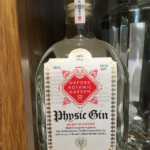Sub fusc and Matriculation: A Spectacle and Performance
Let us first ask what’s all the sub fusc about? Sub fuscus is the Latin word for ‘dark brown’. It is a unique academic dress that is worn for important occasions like the matriculation ceremony, the degree ceremony, the end of year exams, and sometimes for formals in particular colleges. The wearing of formal dress and gowns can be traced back to medieval monks in the early stages of the university, which then being fossilised around the Edwardian period as a tradition. Generations of students have paraded around the city and occupied the space in their black and white clothes.
The whole tradition and culture developed around the sub fusc has indeed become a representation of an authentic experience of studying in Oxford, which I argue is a spectacular and performative one. The word Oxford is chosen deliberately. Instead of saying studying in University of Oxford or the city of Oxford, I want to use the single term Oxford to stress an interesting relationship between place, place name, imagination and authenticity. As a city where a university has occupied most of its space in the city centre, as well as significantly intertwined with its history of development, the meaning and imagination of the place name of Oxford has been entangled with the image of the university. For many tourists, having a tour Oxford is about visiting the university.
As Cavanaugh and Shankar (2014: 56-57) has argued, ‘authenticity is both product and process, as actors use linguistic and material elements to construct chronotopes that connect their products to places, times, bodies of knowledge, and practices—as well as to each other’. Being the linguistic materials of the academic dress, the arcane Latin word enchants and embodies the history of the oldest university in the English speaking world, the prestigious status of the academics in the past and the western intellectual history since ancient Greek. All of these socio-cultural meanings have then been materialised in the standardised academic dress as well as the practices of wearing the sub fusc. From using the word sub fusc to purchasing and wearing them, these are labour that enable the production of meaning and value in relation to the material production and consumption of the commodities.
The creation and maintenance of this authenticity of a prestigious culture of higher education are in fact economic practices that construct and market cultural productions that they construed as ‘authentic’. As I have suggested, postgraduate students have to spend lots of money to buy the sub fusc that could only be used once in order to be considered as a member of the university. Nevertheless, we are all clear with the fact that registration goes with the administration office, and our identity as an Oxford student is approved and legitimised by the office instead of the performative ceremony. In this sense, it is obvious how cultural values of sub fast are recruited into capitalist projects for their economic value through what Cavnaugh and Shankar called ‘linguistic materiality’, the dynamic co-existing of words and things. By participating in the active construction of an authentic tradition and heritage of Oxford, we are contributing to the project that generate economic values through enchanting and producing the idea of authenticity.
Reference:
Cavanaugh, J and S, Shankar. 2014. Producing Authenticity in Global Capitalism: Language, Materiality, and Value: American Anthropologist 116 (1): 51-64.
Contributed by BichenXu on 06/02/2023






